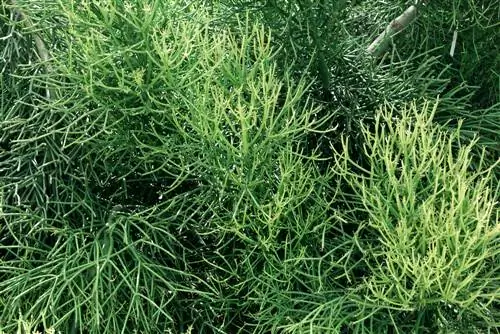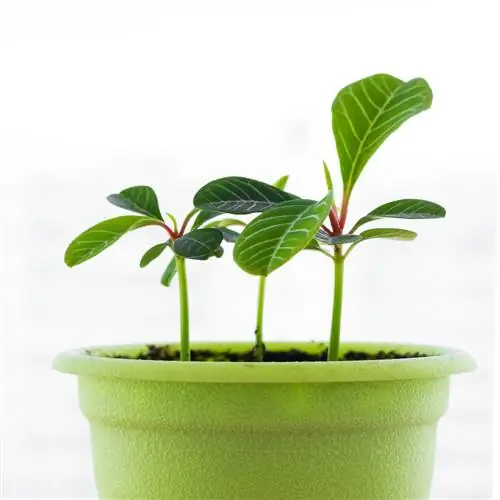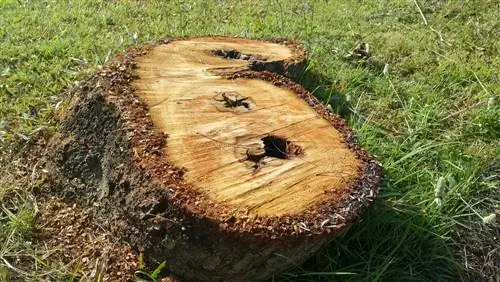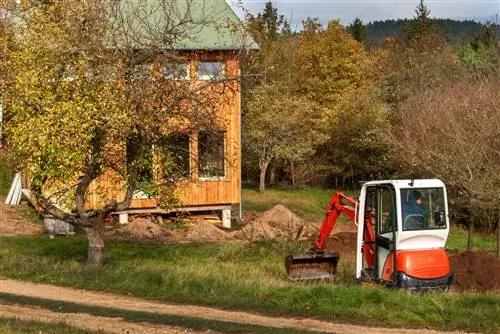- Author admin [email protected].
- Public 2023-12-16 16:46.
- Last modified 2025-01-23 11:21.
The so-called pencil bush (Euphorbia tirucalli) is very popular as a houseplant with its exotic look and the relatively easy-care properties of a succulent plant. In principle, a pencil bush does not necessarily have to be cut, but in certain cases a cut can still make sense.
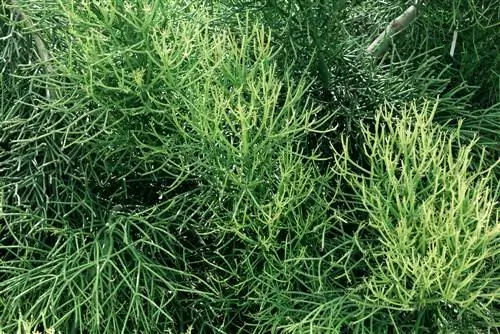
When and how should I prune a Euphorbia tirucalli?
A pencil bush (Euphorbia tirucalli) is ideally cut in the winter months for maintenance and in spring or early summer for propagation. When cutting, be careful of the toxic milk, wear gloves and keep children and pets away.
Don’t worry about “bald” specimens
If you have just acquired a pencil bush for the first time and it suddenly loses more and more of its relatively tiny leaves, this should not cause you to panic. Shedding the already few and small leaves of the pencil bush is quite normal and the real visual appeal of this popular houseplant lies in the evenly strong, thickened branches. These usually branch out on their own to form a very compact and dense growth form. However, if your pencil bush grows very tightly upright and rather slender, it may be stretching for the light. A Euphorbia tirucalli that is at least one year old prefers a full sun location with several hours of direct sunlight every day. Shorten the plant by around a third from the top during the sap-poor winter period and then move it to a sunnier location in time for spring.
Proper cutting for care and propagation
The winter months are a good time for just a care cut, as this is when a little less of the poisonous white milky sap comes out of the plant's interfaces. This “bleeding” from the pencil bush can also be coagulated and stopped more quickly if cloths soaked in hot water are applied. It is not necessary to thin out the pencil bush, which typically grows in a very “tangled” way, as there are no leaves that interfere with ventilation and light, as would be the case with fruit trees with dense treetops. Material for propagating cuttings is ideally obtained in spring or early summer. Please note the following information:
- Use the most mature shoots of the pencil plant possible
- use clean, sharp cutting tools
- Cut cuttings about 12 to 15 cm long
- Make cuts directly below a leaf node
- Allow cuttings to dry for 48 hours before placing them in the substrate
- choose a warm and bright, but not full sun location for the cuttings
Precautions when pruning Euphorbia tirucalli
Since mere contact with the skin or mucous membranes with the white milky sap of the spurge family can lead to serious he alth problems, there should be no children or pets nearby when pruning a pencil bush. Wearing gloves and immediately washing off the milky sap from your hands or other body parts is strongly recommended. The cuttings that are to dry before further processing should also be stored in a safe place where inexperienced third parties cannot come into contact with them.
Tip
If a densely branched pencil bush is cut back, it is not uncommon for a plant with numerous cuts to be left behind. To ensure that the milky sap that enters the respiratory tract through evaporation does not have a negative impact on he alth, a room with a freshly cut pencil bush should be ventilated particularly thoroughly in the first few days after the cut.

